The Buckland Museum in Old Brooklyn Is a Window Into the World of Witchcraft
by Christina Rufo | Oct. 3, 2024 | 9:00 AM
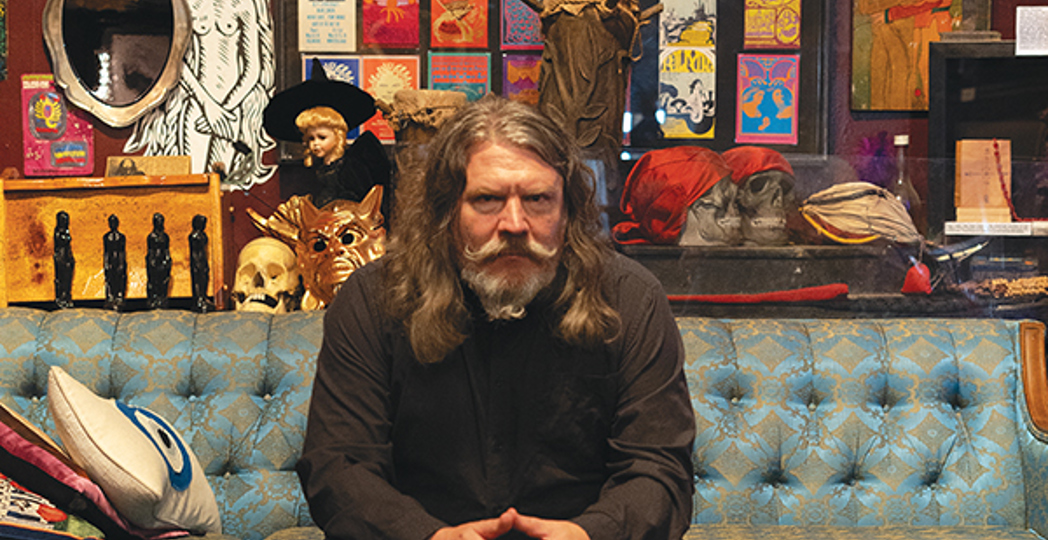
Alister White
Steven Intermill, with his long hair and handlebar mustache, starts the tour by drawing the shades of the Buckland Museum of Witchcraft in Old Brooklyn with his black-and-silver walking stick.
The entrance walls are filled with crystals, spellbinding candles, posters and dozens of educational books explaining a rich tapestry of occult history. Tucked behind a thin wall, the dimly lit space displays a collection of divination tools, including tarot cards, crystal balls and tea cups for foreseeing the future and making decisions. Notes and signs litter the small, dense museum space explaining in grave detail the significance of nearly every object. The strong musk of incense lit in the gift shop wafts through the air, enveloping the experience of intrigue.
“Essentially, witchcraft’s real title is magick, and magick is affecting the world around you through thoughts and ritual,” Intermill says.
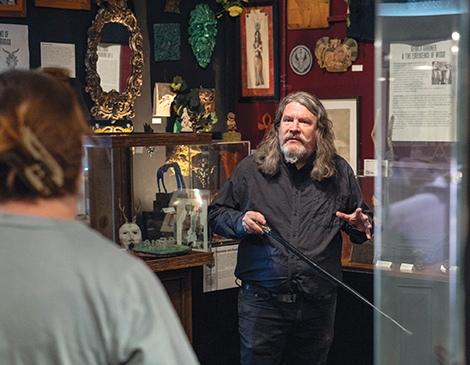
Every hour, the museum tour guide recites this rich history of witchcraft to groups of the nearly 7,000 visitors who venture to the Buckland Museum of Witchcraft each year. Tickets are cheap, ranging from $8 to $10. With a max of eight people per tour, every visitor gets a unique, intimate experience to explore the occult objects. Some are in search of spiritual guidance. Others are here for entertainment.
A sign hangs above the door reading “Not for everyone.” Intermill explains that the sign’s reminder is point-blank: witchcraft has a complex history that not all visitors may come to understand or accept. The museum is not necessarily a space for witchcraft to be conducted but rather a place where Pagans or self-practicing Wiccans can see the historical items that once belonged to the elders of their craft. Intermill lightens the mood of the tour with jokes to assure visitors that witchcraft can be educational, despite common misconceptions. Collections from the set of the 2016 movie The Love Witch sprinkle a bit of pop culture fun into the otherwise dark undertones of the tour.
“Witchcraft is a rebuttal to the patriarchy,” he says. “It is a way of self-empowerment, and it gives people an ability to take part in their own spiritual path.”
Intermill works in devotion to the museum’s founder, Ray Buckland. Originally from England, he was a protege of Gerald Gardner and played a pivotal role in the introduction of Wicca to the United States. Buckland wrote extensively on the subject, creating the foundational book, Buckland’s Complete Book of Witchcraft. Artifacts such as ritual tools used by Buckland and his wife, Rosemary, include a high priest ceremonial horned helmet, along with a crescent moon headdress.
“The moment that [helmet] was placed on Rosemary’s head, the occult landscape changed forever,” the museum director says.
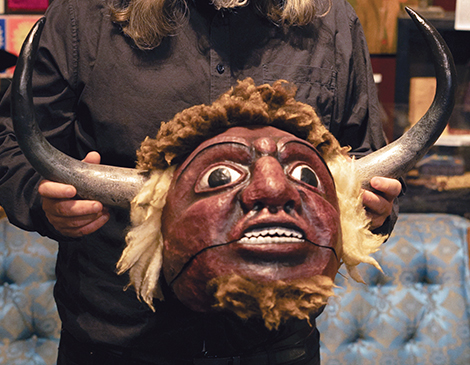
While working at another popular Cleveland museum, the A Christmas Story House, Intermill inquired about Buckland’s collection — one which had traversed the country and passed hands multiple times. A complicated history for complicated objects.
In 1966, Buckland first opened his museum in New York, before moving it to New Hampshire in 1973, then Virginia in 1977. After 1979, the artifacts went into storage for several years.
The collection resurfaced in 1999 in New Orleans, passing through several hands. In 2015, the pieces were entrusted to the Temple of Sacrifice, a Columbus coven co-founded by Buckland. The collection of over 600 items is now owned by Toni Rotonda, high priestess of the Temple of Sacrifice.
In 2016, Intermill brought the collection to Cleveland. “It had been a partnership between the two of us that has turned into a great friendship,” Rotonda recounts. “There wasn’t any money that exchanged hands, it was a mutual respect for Ray and his legacy that pretty much built the foundation of our relationship.”
Due to Buckland’s significance in the Craft, most items have been donated from Magickal Practitioners throughout the museum’s six-decade history.

“We need to share this museum because the majority of people out there don’t understand that witchcraft, Wicca, the occult and paganism in general, is not what most people think it is,” Rotonda says. “It’s important for us to share this museum to show people what we are not.”
Initially located inside an old record shop in Tremont, the museum later expanded to its current location on Old Brooklyn’s Broadview Road in 2019. Some visitors say the current space is small. “They should have seen the previous location,” Intermill replies. “This is witchcraft, so it is truly underground.” what we’re doing here.”
As I peruse the collections of traditional oils, radionics and altar displays, Intermill assures me it is safe to walk freely throughout the museum space. My eyes focus on a circle painted in the middle of the floor. When asked about its significance, Intermill casually states that it’s the “protection circle.” I stand in the middle, wondering if I should have stayed here the entire time. But Intermill explains that it is more for show. Encrypted with symbols of occult antiquity and planets that can be seen without a telescope, the circle is a replica to those used centuries ago in occult rituals.
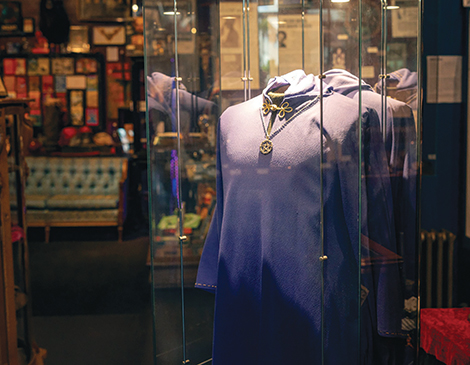
The guided tour is brief, but Intermill is eager to answer questions regarding the collection. He has a lengthy answer for every item on display. Visitors are welcome to browse the collection until closing time to take in every portion of the exhibits.
Despite public misconceptions, the Buckland Museum stands as a beacon for those intrigued by the mysteries of witchcraft and its place in modern culture.
“Most of the display cases and project materials are paid for exclusively by ourselves,” Rotonda states. “It may not be worth a lot to most, but in our own humble opinion, it’s priceless.”
For more updates about Cleveland, sign up for our Cleveland Magazine Daily newsletter, delivered to your inbox six times a week.
Cleveland Magazine is also available in print, publishing 12 times a year with immersive features, helpful guides and beautiful photography and design.
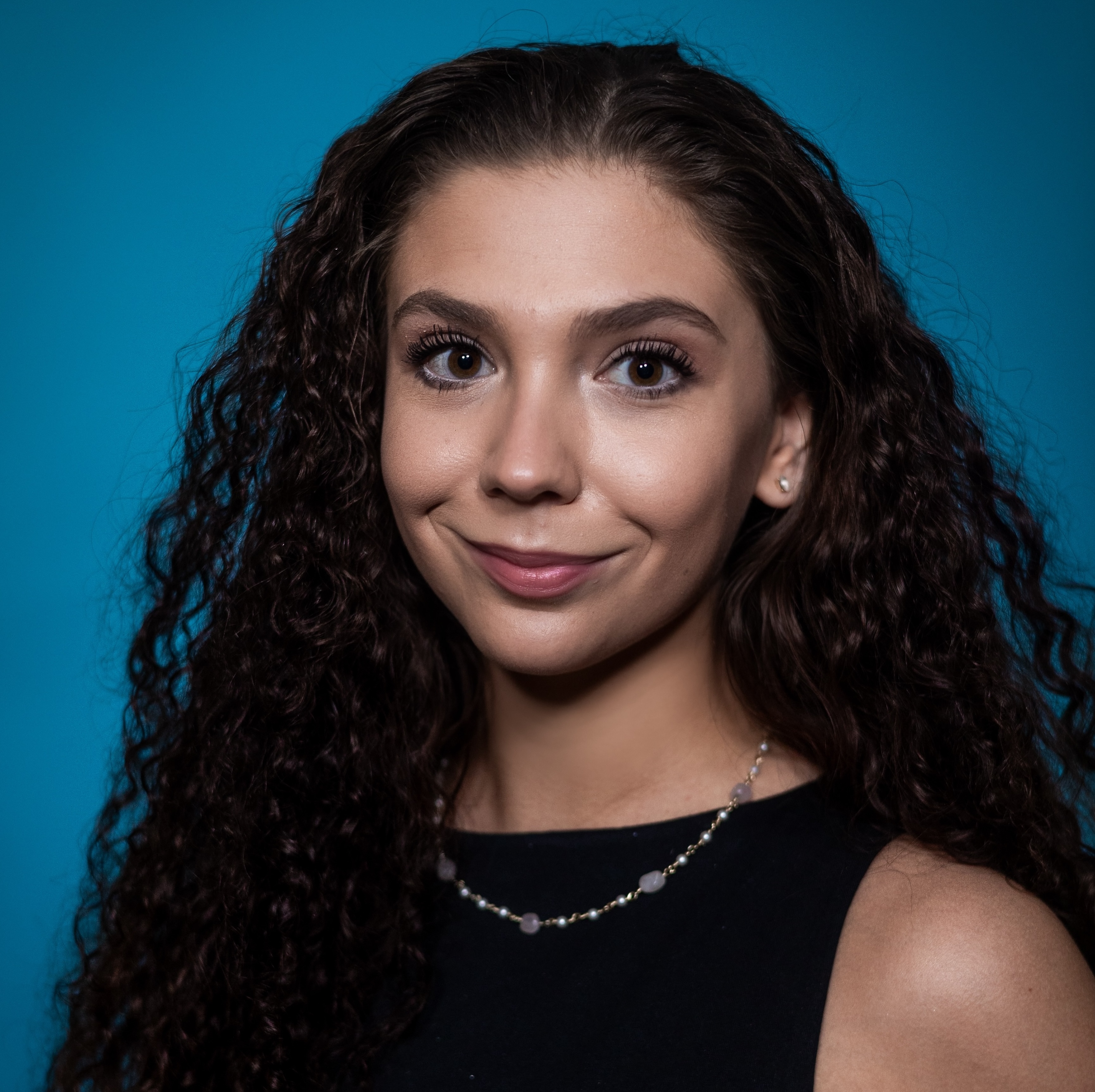
Christina Rufo
Christina is a passionate reporter on Cleveland's culture and dining scene, compiling Cleveland Magazine's monthly dining guide. A graduate of West Virginia University's journalism school and the New York University Publishing Institute, her work celebrates the people, plates and parties that make Northeast Ohio shine.
Trending
-
1
-
2
-
3
-
4
-
5










